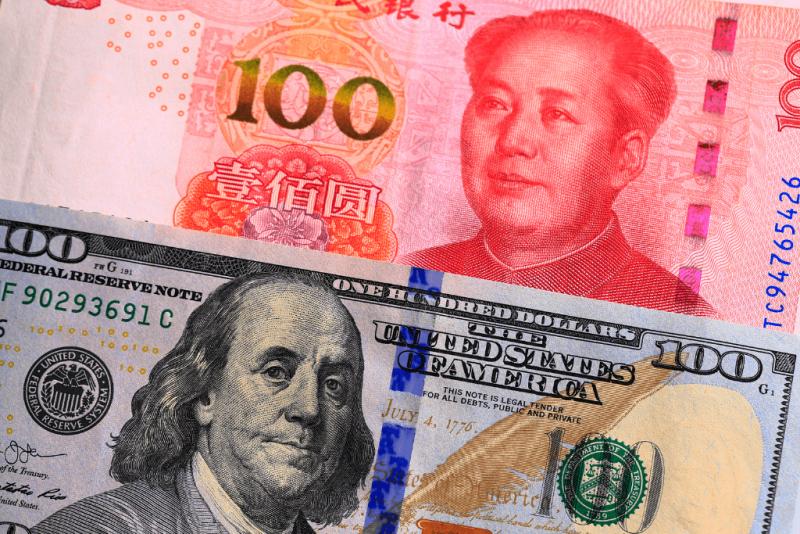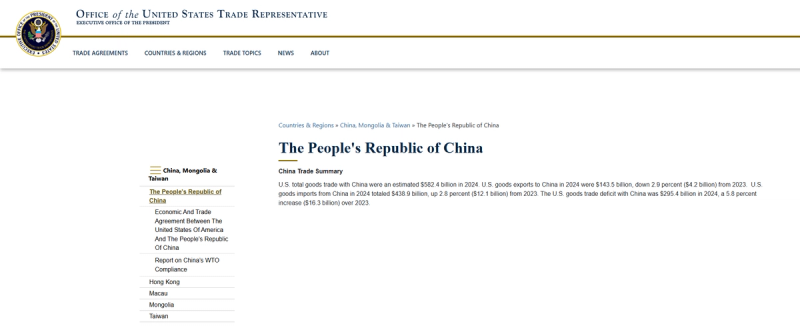China and USA Trade: An Overview and the Impact of Tariffs
Introduction
The economic relationship between China and the United States is one of the most influential and dynamic in the world. As two of the largest economies globally, their trade relations play a significant role in shaping global markets, affecting everything from consumer goods prices to international trade policies. This blog will explore what China and the U.S. trade, how much trade occurs between the two nations, and the impact tariffs have on this vital economic relationship.

What Do the USA and China Trade?
The U.S. and China engage in a broad range of trade across various sectors. Their trade relationship is complex and includes a mix of imports and exports that span industries from technology and machinery to consumer goods.
Here’s a breakdown of some of the key products traded between the two countries:
Electronics and Technology:
- - China is a leading supplier of consumer electronics, including smartphones, computers, and components used in other electronics products. American companies like Apple, Dell, and HP rely on Chinese manufacturers for components and assembly.
- - The U.S. is also a significant exporter of high-tech equipment and software, including semiconductors and aerospace products, which China uses for its growing tech industry.
Machinery and Industrial Equipment:
- - The U.S. exports industrial machinery to China, including items used in construction, mining, and manufacturing processes. In return, China exports finished machinery and construction equipment to the U.S.
- - China is also a crucial supplier of low-cost manufacturing goods such as clothing, shoes, and textiles, which are imported into the U.S. for retail distribution.
Agricultural Products:
- - The U.S. is one of the largest exporters of agricultural products to China, including soybeans, corn, wheat, pork, and dairy. China’s growing population and demand for food make agricultural trade a critical part of the relationship.
- - China also exports agricultural goods like rice, fruits, and vegetables, but the U.S. remains a dominant supplier in terms of bulk commodities like soybeans.
Automobiles and Automotive Parts:
- - The U.S. exports vehicles and automotive parts to China, especially luxury cars and advanced technology. In turn, China exports a large number of low-cost vehicles and automotive components to the U.S.
Energy:
- - Energy trade is significant, with the U.S. exporting natural gas, oil, and coal to China. This exchange grew rapidly as China’s energy demands rose with its industrialization. Additionally, China is the world’s largest producer and consumer of solar panels and related equipment.
Trade Volume Between China and the U.S.

According to the U.S. Census Bureau, the trade volume between the U.S. and China has been enormous for decades. In 2020, the total goods traded between the two countries amounted to over $600 billion, with China being the largest trading partner for the U.S. for several years running.
- - U.S. Exports to China: In 2020, the U.S. exported roughly $124 billion worth of goods to China, including agricultural products, machinery, and aerospace products.
- - U.S. Imports from China: The U.S. imported about $435 billion worth of goods from China in 2020, which largely consisted of electronics, machinery, textiles, and toys.
While the U.S. has a trade deficit with China (importing more than it exports), China benefits by accessing cutting-edge technology, agricultural products, and energy resources from the U.S. As a result, both nations are interdependent in many sectors.
How Tariffs Affect the U.S.-China Trade Relationship
Tariffs are one of the most discussed topics in the context of U.S.-China trade relations. A tariff is essentially a tax imposed by one country on goods imported from another. Over the past several years, tariffs have been used as a tool in trade negotiations, with both nations imposing levies on each other’s goods.
The Trade War (2018-2020):Impact of the Trade War:
- - The most significant and publicized tariffs were introduced in 2018 when President Donald Trump initiated a trade war with China. The U.S. imposed tariffs on $370 billion worth of Chinese goods, primarily focusing on electronics, machinery, and steel.
- - In retaliation, China slapped tariffs on $110 billion worth of U.S. goods, including agricultural products like soybeans, pork, and beef.
- - U.S. Exporters: U.S. agricultural exporters, especially soybean farmers, were hit hard by tariffs, losing access to China’s large market. The tariffs led to a decrease in demand for U.S. products in China.
- - Chinese Manufacturers: Chinese manufacturers faced rising costs for raw materials and machinery due to U.S. tariffs, which made their products less competitive in international markets.
- - Global Supply Chains: The trade war disrupted global supply chains, as companies were forced to look for alternative suppliers or manufacturing locations outside of China to avoid tariffs.
Phase One Deal (2020):
- - In January 2020, both countries signed the Phase One Trade Agreement, which resulted in some tariff reductions. China agreed to purchase additional U.S. goods, including agricultural products, and the U.S. agreed to reduce tariffs on certain Chinese products.
- - However, many tariffs remain in place, and the Phase One deal only addressed a portion of the trade issues between the two nations.
Current Status:
- - While the trade war has somewhat eased, many of the tariffs remain in place. The Biden administration has continued to enforce tariffs on a range of Chinese products, citing concerns about unfair trade practices, intellectual property theft, and market access.
- - China’s Response: China has been seeking to retaliate with counter-tariffs, which affects not only the U.S. but also global markets that rely on Chinese exports.
How Tariffs Have Changed the Trade Landscape
Tariffs have caused market volatility and uncertainty for businesses and investors. While tariffs were initially introduced to encourage China to play by international trade rules, they have created ripple effects throughout the global supply chain:
Price Increases for Consumers:
- - U.S. consumers have faced higher prices on goods imported from China, especially electronics and consumer products. Tariffs act as a tax on imports, which can make everyday goods more expensive.
Diversification of Supply Chains:
- - In response to tariffs, companies have been diversifying their supply chains, moving production to other countries like Vietnam, Mexico, or India to avoid tariff rates.
Reduced Global Trade:
- - The tariffs have slowed down the pace of global trade, especially between China and the U.S., as companies struggle with the higher costs of doing business across borders.
Conclusion
Trade between the U.S. and China is complex, with both nations benefiting from the exchange of goods and services. While the U.S. continues to import more than it exports to China, the countries are economically intertwined. The ongoing tariff situation continues to impact trade, with both nations attempting to assert their economic interests on the global stage. While the trade war has softened, the imposition of tariffs remains a key part of U.S.-China relations, creating both challenges and opportunities for businesses, governments, and consumers alike.
As the trade dynamics between the U.S. and China continue to evolve, it will be crucial to monitor tariff policies and how they shape the global economy in the years ahead.

